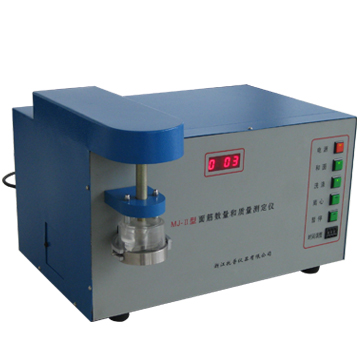Why doesn't the flour mill measure gluten by hand instead of gluten?
Gluten is a decisive factor that influences the quality of bread and biscuits. Therefore, gluten determination is one of the most important flour quality inspection items in the flour mill production test process. And we know that almost all flour mills use gluten meters to measure gluten, and handwashing gluten is rarely used. Why? Pictured: gluten The use of hand-washing method to measure gluten is relatively tedious and takes a long time. One sample takes 40-50 minutes, and the error is large. The accuracy rate is only 1%. The specific operation process is as follows: 1. Weigh 200 grams of high-gluten flour into the container. Whether it is from the perspective of efficiency or accuracy, hand-washing gluten measurement is not so suitable for flour mill testing. The gluten meter is a professional instrument for measuring gluten content and quality such as flour. The instrument overcomes the shortcomings of hand-washing, has good repeatability, and has a high degree of automation. Flour mills use this device to measure gluten, which can not only effectively improve work efficiency, but also improve accuracy. High, very good to meet the high requirements of the flour mill to strictly control the quality of flour, but also in line with the needs of the flour industry's industrial production, so the company to conduct flour gluten determination of course preferred gluten meter.
A shell and tube heat exchanger is a type of heat exchanger that is commonly used for heating, cooling and condensing applications. lt consists of a shell with an internal bundle of tubes,which allows the hot and cold fluids to pass through the walls of the exchanger and exchange their energy. Shell and tube exchangers are classified in several ways, including design, operational construct, and construction materials. Mainly Fixed Tube Heat Exchanger, Floating Head Heat Exchanger, U-tube Heat Exchanger, and double tube heat exchanger.
The working principle of a shell and tube heat exchanger is relatively simple. The system is designed with two separate flows on either side of the heat exchanger. The primary flow of the hot fluid passes through the tubes, while the secondary flow of the cold fluid passes through the spaces between the tubes. Heat is then transferred from the hot side to the cold side via conduction, leading to an exchange of temperatures.
Shell and tube heat exchangers are normally used in process plants and used in a wide range of applications. A case in point is the cooling of condensates in refineries and nuclear power plants. In this application, condensate is heated using an external source and passed through the tube section of the heat exchanger. This condensate is then cooled and condensed as it passes through the shell side, where the heat is transferred to a cooling medium such as water, steam or oil.
Shell And Tube Heat Exchanger,Fixed Tube Sheet,Shell Tube Heat Exchanger,Split Ring Floating Head Heat Exchanger Guangdong Jiema Energy Saving Technology Co.,Ltd , https://www.heatexchangerjiema.com
2, add 125 grams of water at room temperature, stirring flour and water to form a soft and hard right dough, then record the amount of water used is the flour's water absorption.
3. Wash the dough in a container. During the washing process, the water should be replaced. The starch and other water-soluble substances in the flour should be washed away. The remaining soft-gum black-gray substance is gluten.
4. Leach the wet gluten to the water, squeeze it by hand, shake off the excess water, and weigh to get the wet gluten content.
5. Place the wet gluten on a baking sheet and bake at 100 degrees for 2 hours. Allow to stand for 24 hours at room temperature and dry naturally. Obtain dry gluten.
6. Calculate the results based on the dry gluten weight and wet gluten weight obtained from the experiment.